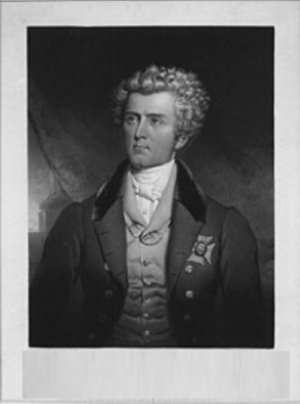"Half Mile-Strip" Treaty
The "Half Mile-Strip" Treaty made it possible for a relatively smooth overland connection to be built between Owen Sound and the Lake Huron shoreline.
In the first years of settlement in Grey and Bruce counties, travel was difficult at best. Coastal communities such as Owen Sound, Wiarton and Southampton relied heavily upon water transportation for the conveyance of people and produce. However, when the winter freeze-up occurred, out of necessity, overland transit became more important.
In the 1840s, travellers from the Georgian Bay side of the peninsula often relied upon the portage route from Colpoy's Bay to Sauble Falls, rather than the longer, often more treacherous route around the tip of the peninsula at Tobermory. During the winter, both routes were impassable to shipping traffic. Consequently, travel across the peninsula meant trekking by foot or sleigh along virtually uncut trails.
Today, there are many excellent roads and highways which connect the Georgian Bay and Lake Huron shorelines and the communities in between. One such highway is the route between Owen Sound and Southampton.
On previous occasions, I have detailed how shipping disasters had occurred off the shore at Southampton and the news was carried here by messengers who walked overland to Owen Sound.
The road which became Highway 21 has an interesting origin. In 1836, the Governor of Upper Canada, Sir Frances Bond Head, negotiated a treaty with the natives of the area. The treaty included all the lands south of a line drawn between the mouth of the Saugeen River at Southampton to the mouth of the Sydenham River in Owen Sound.
 Sir Francis Bond Head
Sir Francis Bond HeadThe "Half-Mile" Strip
In Bruce County, this land became Arran Township. However, the natives maintained a concession of Arran called the "Half-Mile Strip". Because all the land north of this line remained native land, the Bruce Peninsula was originally called the Indian Peninsula.
To mark the boundary between the native and non-native lands, the Public Land Surveyor, Charles Rankin was commissioned in 1846 to survey the line between the mouth of the Saugeen and the mouth of the Sydenham. In 1851, another treaty was signed with the Saugeen Indians. In this pact, the natives ceded the Half-Mile Strip.
What does this have to do with the road between Southampton and Owen Sound? In return for the Half-Mile Strip, the government of Upper Canada agreed to build a road between the native village of Newash, north of Owen Sound, to the native village near the mouth of the Saugeen. It was not until 1865 that construction on the road started. In that year, the government allocated funds not only for the road, but also for the building of Denny’s Bridge.
There is much speculation as to the reason why it took 14 years for the government to act on this much-needed transportation artery. The most likely reason was because the Owen Sound Post Road, which linked Owen Sound to Lake Huron shore, was built in 1852. The Post Road passed through Kilsyth, Tara, Arkwright and Burgoyne.
By 1865, James Allan's community at Driftwood Crossing (now known as Allenford) and the settlement at Elsinore were growing, and the surrounding lands were populated with farms. In order for the farmers in these new communities to ship their produce to Owen Sound or Southampton, a good land transportation route was needed, The older descendants of Amabel and Arran townships recall stories of their parents and grandparents getting up early in the morning and walking with their produce in sacks on their backs to either Owen Sound or Southampton and returning late that night with supplies.
So, the next time you are driving along Highway 21 and there is an eerie fog, look off into the mist and you may see the figure of James Allan or one of the other early pioneers trudging along with a heavy pack on their back!
Aboriginal History
The Aboriginal History of the Bruce Peninsula is an interesting microcosm of the aboriginal history of Canada. Exploring the pages that follow you will read about the numerous treaties that impacted the lives of the indigenous peoples of the peninsula.
Aboriginal History: The 1836 Treaty made promises to the native peoples of the Bruce Peninsula which did not last long before everything changed again.
Aboriginal History: the Bruce Peninsula has a long indigenous heritage not just for the native nation living there today, but for other native groups as well.
Bruce Peninsula Land Claim: Historical Perspective explores the some of the pre-conquest era on the Bruce Peninsula adding further information surrounding the quest of the Indigenous people in terms of the current land claim.
Catherine Sutton: aka Nahneebahweequay was a hero, fighting for her Indigenous rights and those of her family. She took her issues to Queen Victoria.
"Half Mile-Strip" Treaty made it possible for a relatively smooth overland connection to be built between Owen Sound and the Lake Huron shoreline.
Settler Impact on Bruce Peninsula Natives was not only from the imposition of treaties, but also from British military plans.





